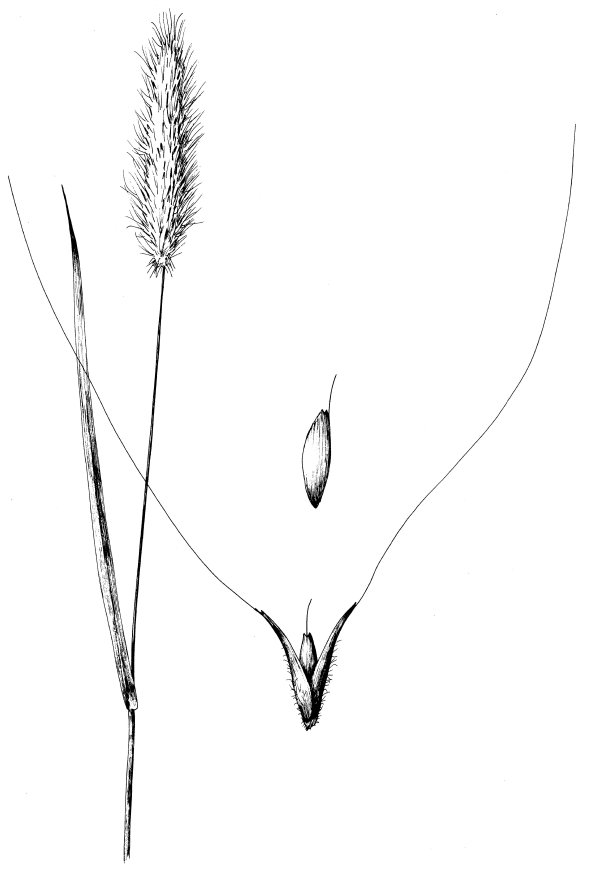
Polypogon monspeliensis (L.). Rabbitfoot Polypogon Habit: Annual. Culms: Mostly 15-50 cm. tall, erect or decumbent at the base, sparingly branched, usually tufted. Blades: Flat, 4-15 cm. long, 3-10 mm. wide, acuminate, scabrous especially above. Sheaths: Nearly as long as the internodes, upper somewhat inflated, loose. Ligule: 4-6 mm. long, membranous. Inflorescence: A dense, contracted, spikelike panicle 2-15 cm. long, 1-2 cm. wide, tawny yellow, when mature, sometimes interrupted below, soft silky, often partly included in the uppermost sheath. Spikelets: Crowded, 1-flowered, flower perfect, about 2 mm. long, nearly concealed by the numerous awns, the pedicels disarticulating a short distance below the glumes, leaving a shortpointed callus attached. Glumes: Subequal, about 2 mm. long, hispidulous, each bearing a slender straight awn, 4-8 mm. long, from the obtuse or 2-toothed apex. Lemmas: Broad, smooth and shinning, about half as long as the glumes, hyaline, thin, emarginate or 2-toothed at the apex, bearing a delicate awn about 0.5-1 mm. long, inserted just below the apex or sometimes wanting. Palea: About two thirds as long as the lemma. Habitat: Waste places, wet soil. April-August. Kansas Range: Along the Arkansas river valley east to Reno county. Use: Palatable forage but too uncommon to be of value in Kansas.